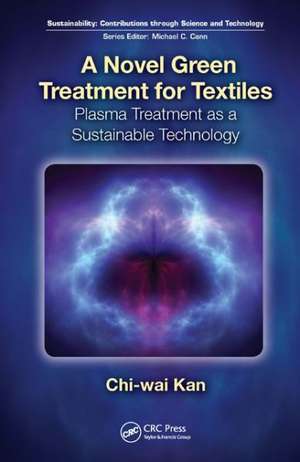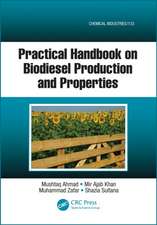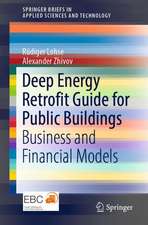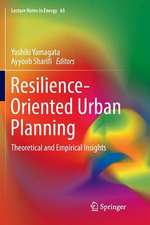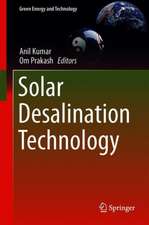A Novel Green Treatment for Textiles: Plasma Treatment as a Sustainable Technology: Sustainability: Contributions through Science and Technology
Autor Chi-wai Kanen Limba Engleză Hardback – 2 sep 2014
A Novel Green Treatment for Textiles: Plasma Treatment as a Sustainable Technology discusses the plasma treatment of textile fibres and its environmental, economic, and social benefits. The book reviews the general properties of textiles and provides a description of the current treatment methods typically used today. The author then introduces the concept of plasma and its application in treating textile materials. The application of plasma as a pretreatment as well as a treatment in dyeing textiles is discussed.
The book summarizes the application of plasma treatment in the printing and finishing of textiles. Also explored is the concept of sustainability and its role in the development of plasma treatments in textile wet processing. The 12 Principles of Green Chemistry are incorporated throughout the book.
| Toate formatele și edițiile | Preț | Express |
|---|---|---|
| Paperback (1) | 568.28 lei 6-8 săpt. | |
| CRC Press – 15 apr 2019 | 568.28 lei 6-8 săpt. | |
| Hardback (1) | 1331.73 lei 6-8 săpt. | |
| CRC Press – 2 sep 2014 | 1331.73 lei 6-8 săpt. |
Preț: 1331.73 lei
Preț vechi: 1624.06 lei
-18% Nou
Puncte Express: 1998
Preț estimativ în valută:
254.91€ • 276.98$ • 214.26£
254.91€ • 276.98$ • 214.26£
Carte tipărită la comandă
Livrare economică 21 aprilie-05 mai
Preluare comenzi: 021 569.72.76
Specificații
ISBN-13: 9781439839447
ISBN-10: 1439839441
Pagini: 312
Ilustrații: 83 black & white illustrations, 58 black & white tables
Dimensiuni: 156 x 234 x 23 mm
Greutate: 0.59 kg
Ediția:New.
Editura: CRC Press
Colecția CRC Press
Seria Sustainability: Contributions through Science and Technology
Locul publicării:Boca Raton, United States
ISBN-10: 1439839441
Pagini: 312
Ilustrații: 83 black & white illustrations, 58 black & white tables
Dimensiuni: 156 x 234 x 23 mm
Greutate: 0.59 kg
Ediția:New.
Editura: CRC Press
Colecția CRC Press
Seria Sustainability: Contributions through Science and Technology
Locul publicării:Boca Raton, United States
Public țintă
Textile and materials technologists and scientists, graduates and teachers in textiles and material science, and industrial and applied chemists.Cuprins
Introduction. Textile Materials. Processes for Treating Textile Fibres. What Is Plasma? Application of Plasma in the Pretreatment of Textiles. Application of Plasma Treatment in the Dyeing of Textiles. Application of Plasma Treatment in the Printing of Textiles. Application of Plasma Treatment in Finishing of Textiles. Sustainability and Development of Plasma Treatment in Textile Wet Processing. Index.
Notă biografică
C.W. Kan is an associate professor at the Institute of Textiles and Clothing, which is part of The Hong Kong Polytechnic University. His research interests fall in the area of textile colouration and finishing and focusses on the surface modification of textile materials with the use of novel technologies such as plasma and laser. Dr. Kan graduated from The Hong Kong Polytechnic University with a BSc and PhD in textile chemistry. He has published more than 300 refereed journal papers and conference proceedings.
Descriere
Focusing on green chemistry and sustainability, this book discusses how plasma treatment is used to modify textile properties. It highlights the benefits of generating plasma and the reaction mechanisms between the surface of a textile and plasma species. The text addresses the nature of plasma gas, gas flow rate, system pressure, and discharge power that affect the results of plasma treatments. An opening chapter presents the environmental, economic, and social costs of current methods of treating textiles. Throughout the book, the author explains how the 12 principles of green chemistry can be applied to the textile industry.
